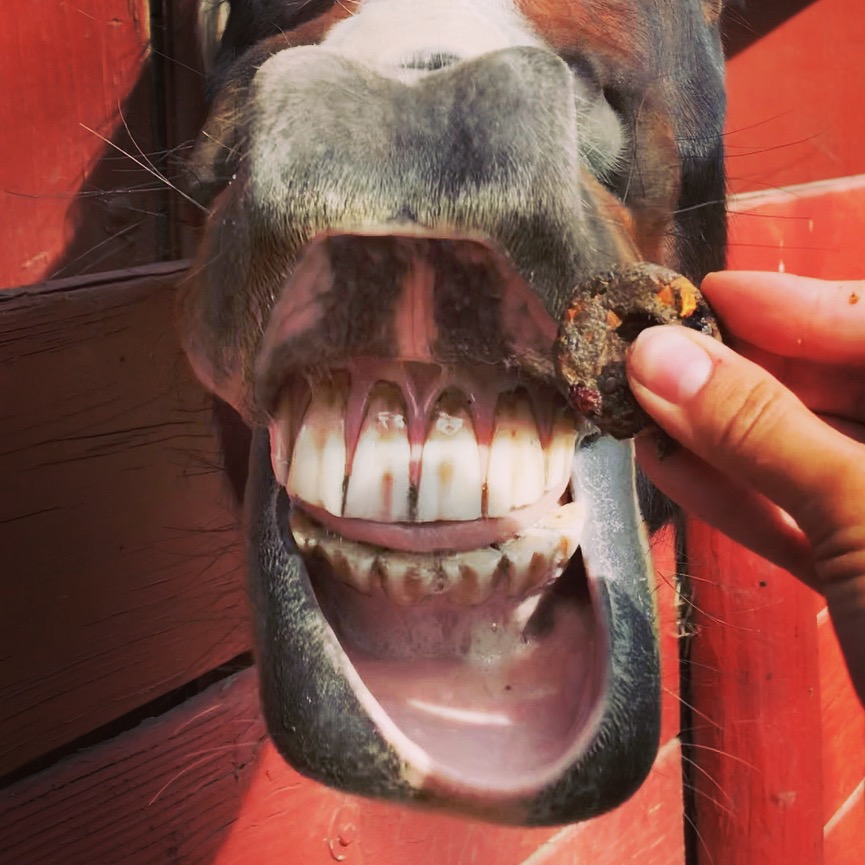How to Prevent and Treat Thrush in Horses
- Twenty Four Carrots

- Jan 17
- 3 min read
What’s thick and smelly, and black all over? Thrush! You’ll know it when you see it (or smell it). Thrush is a bacterial infection in the frog of horse hooves, and it thrives in wet conditions. *1
So, if you’re dealing with excess rain, snow, or mud — stay on the lookout for this pesky infection. But don’t blame the weather entirely! Inconsistent hoof care can also lead to thrush.
Let’s talk about how to prevent and treat thrush in horses so you can keep your critter happy and healthy!

Symptoms of Thrush
How can you be sure your horse has thrush? Here are some telltale signs:
Foul, rotten-egg smell coming from the hoof.
Black, slimy discharge around the frog.
Tenderness and sensitivity in the hoof.
Lameness in more severe cases. *1
Causes of Thrush
Wet conditions: Think muddy paddocks after rainfall or damp, unkempt stalls. This moisture creates the perfect environment for bacteria to grow.
Improper hygiene and hoof trimming: Skipping daily hoof picking can allow bacteria to thrive near the frog. Overgrown hooves also trap moisture, increasing the risk of thrush. *2
Limited movement: Horses need to move! Lack of turnout and exercise reduces circulation in the hoof, increasing the risk of thrush. *1

How to Prevent Thrush
Stay on top of hoof care: Clean your horse’s hooves regularly — at least twice a day, especially for horses with limited turnout or exercise.
Keep their environment clean: Clean paddocks and stalls frequently. Opt for a moisture-absorbing bedding that also supports hoof health.
Schedule routine farrier visits: Schedule farrier appointments every 6-8 weeks. Regular trimming supports frog and hoof balance. *3
Prioritize exercise: Horses are designed to move frequently, and without regular mobility, they are prone to more issues than just thrush.
How to Treat Thrush
Antibacterial solutions: Clean the hoof thoroughly with hydrogen peroxide or diluted iodine. Repeat daily until the bacteria clears up.
Home remedies: Try a natural remedy, such as apple cider vinegar to fight off bacteria.
Commercial products: Use a specialized product, such as Thrush Buster for fast results.
If the thrush does not improve — or your horse becomes lame or extremely sensitive — call your vet for advice!

Rehab is Key to Recovery
Once you’ve started treatment, take extra steps to keep thrush from returning:
Ensure your horse gets consistent exercise.
Keep their quarters clean and dry as possible.
Lastly, stay consistent with hoof hygiene and regular trimming!
The Role of Nutrition in Hoof Health
A healthy diet is the foundation of a strong, healthy horse. Just like us, horses need a balanced diet full of nutrients to thrive.
Horses require the right mix of proteins, vitamins, minerals, and amino acids. Poor nutrition can weaken hoof walls, making them prone to splitting or cracking. In severe cases, nutritional imbalances can lead to infections like thrush or abscesses. *3
Adding supplements to your horse's diet can make a big difference. Omega-3 fatty acids and biotin, for example, promote strong hooves and encourage regeneration. *3

When assessing hoof health, don’t forget about your horse’s immune system. Feeds rich in high-quality protein and fiber can improve gut health and strengthen the immune system. And a strong immune system helps your horse fight off infections like thrush.
But don’t over-supplement! Too much selenium, for example, can weaken the hoof wall and make it easier for thrush to settle in. *4 Always check with your vet before making big changes to your horse’s diet.
Looking for an easy solution? Inner Glow Omega Booster combines the ideal ratio of fatty acids and antioxidants to support your horse’s immune system while improving coat and hoof health.
Final Thoughts
In most cases, thrush is an easy fix. However, it’s a sign that something in your horse's routine, environment, or diet may need tweaking. And that’s okay! A few simple changes can get your horse back on track.
If you decide to improve their diet to support hoof health, you’re also setting them up for a healthier future overall. A balanced diet means a happy horse!
Sources



Comments